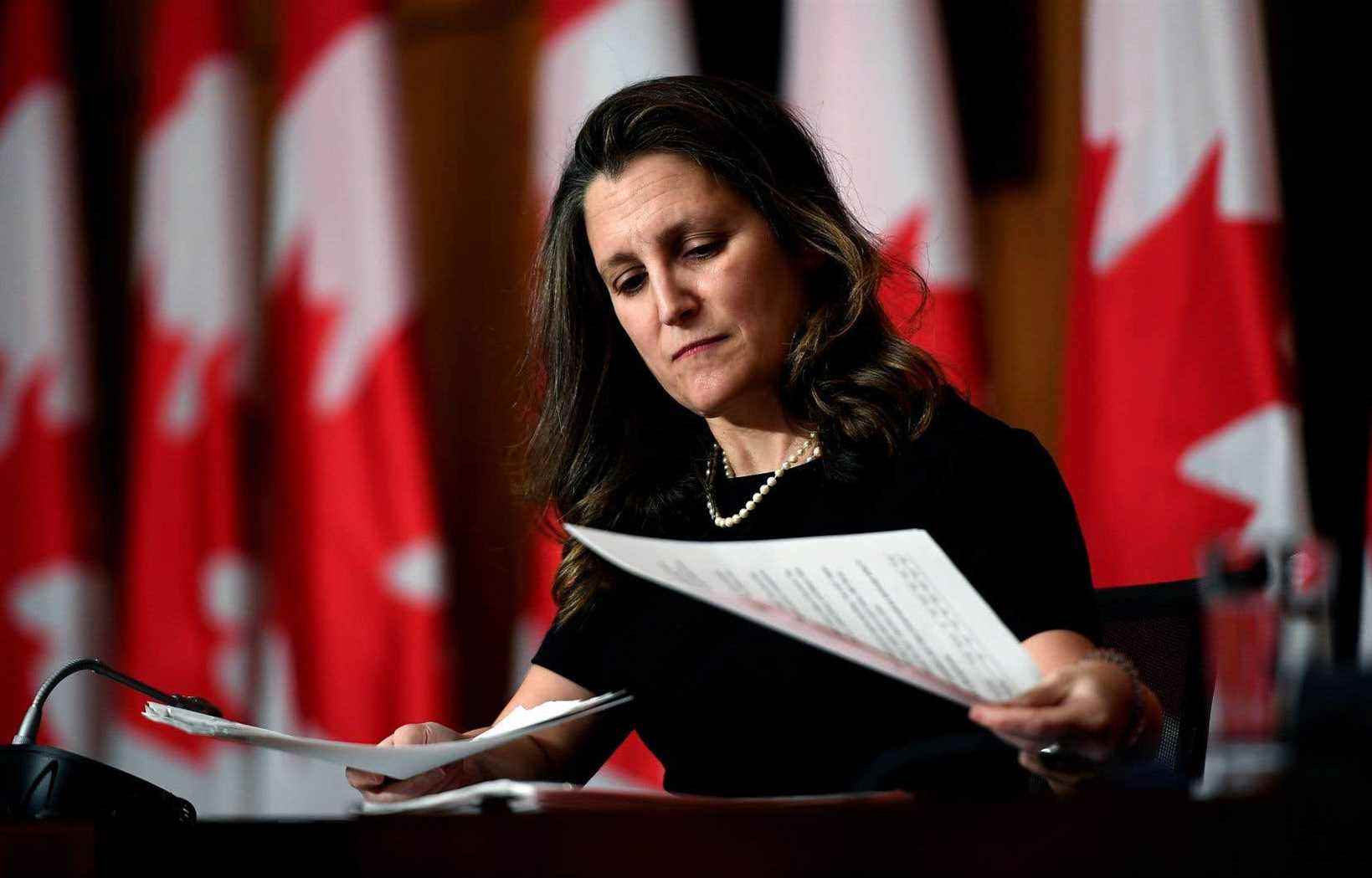Faced with the Omicron variant, the Trudeau government is planning $ 4 billion to increase the proposed “insurance policy” so that workers and businesses can deal with further economic downturns or lockdowns, which is not reassuring for as much the oppositions in Ottawa.
“It is prudent for the government to provide money in case it is necessary, and it is also important for the federal government to send a message to the provinces, territories, municipalities [qu’en cas de nouvelles mesures sanitaires], the federal government will be there to protect businesses and people, ”Finance Minister Chrystia Freeland explained at a press briefing on Tuesday.
Seeing a progression of the variant in the country, the Deputy Prime Minister of Canada says she added at the last minute 4.5 billion to some 6.8 billion dollars in new spending over six years (including 6.4 billion for the current and next year) already allocated to the fight against COVID-19 in its economic and budget update released on Tuesday.
Apart from $ 500 million spent on the borders, the bulk of the sum reserved for the Omicron variant, more precisely $ 4 billion, is set aside in case the new variant plays a spoiler with the Canadian economy. This would have the consequence of exploding the bill of the bill which provides for new pandemic aid.
The text of C-2, currently under consideration in Parliament, is presented by the federal government as its “insurance policy” for the country’s economy. It provides for the renewal of certain assistance programs and the creation of better-targeted wage and rent subsidies, in addition to a new emergency benefit for workers in the event of a new regional confinement. The cost of this bill was initially estimated at 7.4 billion.
Dissatisfied oppositions
Opposition Leader Erin O’Toole believes the government is still way too spendthrift, which he claims is the cause of high inflation in the country. However, he refused to specify on Tuesday which pandemic programs he considers superfluous in what is presented by the government.
“With a very high level of vaccination, over 85%, it is possible to find a balance between the open economy and health measures,” he says.
The New Democratic Party, on the other hand, laments that the Trudeau government has ended the popular Canadian Economic Stimulus Benefit (PCRE), in particular, when the Omicron variant could wreak further havoc on the economy.
The Bloc Québécois, the only party that seems ready to support the government’s Bill C-2, is also disappointed with the economic and budgetary update, since it does not include any additional health transfers to the provinces.
Assistance for seniors and artists
One of his requests, however, was granted by the government, which will pay $ 742 million next year to correct the situation of seniors who have seen their Guaranteed Income Supplement (GIS) cut because they have had recourse to a pandemic emergency program.
“The problem is resolved, but it is resolved too late,” complained on Tuesday the Bloc member Gabriel Ste-Marie.
GIS recipients who have had to tighten their belts since cashing in a Canadian Emergency Benefit (CEP) amount, for example, will find all of their missing benefits without needing to apply, according to a calculation that the Ministry of Finance hopes to finalize by May.
Artists would also receive transitional aid for the pandemic promised to them by the Liberals during the last election campaign. Sixty-two million dollars will go towards a “Resiliency Fund for Performing Arts Workers in Canada”, but not until the next fiscal year, which begins on 1er April 2022.
Details of the new temporary program are not yet known, other than that it will “aim to fund new or improved initiatives” by artists. This does not satisfy the Bloc Québécois, which was rather waiting for the announcement of direct aid for artists, another condition of its support for C-2.
The economic and budget update also supports the cost of other Liberal government campaign promises, such as increased tax credits for teachers and early childhood educators. They can be reimbursed up to 25% (against 15% previously) up to $ 1,000 in school supplies.
With Marco Bélair-Cirino and Marie Vastel
